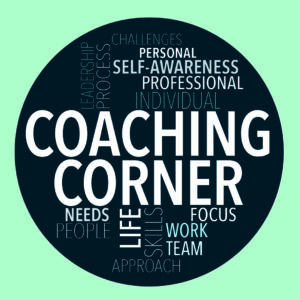
Letting go to grow: How one entrepreneur reclaimed his life and business
Frank's transformation from overwhelmed investor to empowered leader demonstrates how coaching and collaboration enabled him to stand back, delegate, and recover his life....

by Stephanie Comenge Published February 23, 2024 in Coaching Corner • 5 min read

Drew is a director in a large, multinational engineering company. In the two years, Drew has been promoted twice and now heads up a team of 10 engineers, each with their own team of direct reports. While stepping up into this new managerial role, Drew has been charged by senior management with creating and executing a transformation strategy that will equip this part of the business with the capabilities and resources to drive longer-term innovation. But it is not easy.
Drew is encountering resistance to change among these direct reports. They are comfortable and see themselves as a well-oiled machine and they cannot grasp the strategic imperatives that Drew is attempting to outline. What is more, Drew feels that his colleagues in the executive team are not fully behind his strategy nor his leadership of this division. In senior leadership meetings, Drew perceives a lack of support for the ideas shared and feels stuck and unsure about how to secure buy-in from both sides.
As part of a Talent Career Development track in the organization, Drew joined a leadership acceleration program at IMD. Part of the program is a Future Ready Leader Motivation assessment and a 360-degree feedback using the IMD Future Ready behaviors as criteria. It then offers the chance to work with an executive coach for feedback and for creating an Individual Development Plan. Drew begins to analyze which personal internal dynamics could be acting as psychological roadblocks.

Some critical insights emerge from the assessment. Firstly, Drew’s level of focus on leading stakeholders seems low, and he especially seems to be using leaning towards more informal networker behaviors. Secondly, Drew’s orientation towards transformer behaviors, which focus on shaping strategy to deliver results through innovative ways of creating value is also low. Drew is concerned, given that his mandate for the role is business transformation and he knows that building a supportive network is critical to achieving this.
Working through the results of the self-assessment and 360-degree feedback with the coach, Drew begins to look more objectively at the situation and at how his current state of mind may be impacting how he answered the diagnostics. Drew is considerably younger than most of his colleagues and does not share an engineering background. This feeling of being an ‘outsider’ stands in stark contrast for Drew to the success he has previously enjoyed, ascending quickly through the ranks to strategic leadership responsibilities.
On the one hand, these promotions speak clearly to Drew’s ability. On the other hand, rising so quickly through the organization has knocked Drew out of his comfort zone, and impacted his confidence and self-belief. Drew is feeling out of his depth, lost and lonely.
The coach encourages Drew to review how his previous two promotions played out, and how long it took him to settle into each new role. A pattern emerges: Drew typically struggles with self-doubt and needs a period of adaptation before feelings of inadequacy or persecution dissipate. The coach helps Drew to see that despite these initial wobbles, he has consistently managed to make successful career transitions; successful promotions that attest to Drew’s real capacity for strategy and team leadership. In other words, there can be little doubt that Drew is more than equipped to make a success of this role.
Talking to the coach, something else surfaces. Drew’s behavior has become excessively formal in meetings and discussions with the reporting team and senior management. This is a defense mechanism: in limiting responses to questions and maintaining a certain distance from colleagues, Drew is also capping the potential for mistakes or disagreement. But this is erroneous thinking. The coach helps Drew to appreciate how excessive formality that can be mis-interpreted as being arrogant or pushy. What’s more, Drew’s nature is intrinsically sociable and warm; he has an innate talent for making connections and building trust with other people, and this is being inhibited by these defensive behaviors.
Armed with these critical insights, Drew and the coach work on a roadmap designed to help Drew secure the support and buy-in needed to align the team around the change objectives that they will need to execute.

“It is essential to recognize that while dark personality traits can contribute to positive outcomes, they also carry substantial risks.”
Drew works with the coach to identify colleagues with the potential to become allies, meaning individuals with whom he can connect for advice and guidance. From here, Drew takes the initiative to take certain people to lunch, to get to know them informally, and to begin to forge a network of support.
This boosts Drew’s confidence. Deploying his intrinsic talent for interpersonal engagement, Drew starts to see real relationships develop that give lie to the perceptions of hostility or resistance that have held progress back till now. As a result, Drew now begins to feel more empowered to speak up in senior leadership meetings and to give voice to the ideas and suggestions that have hitherto been blocked by excessive formality and fear of saying or doing the wrong thing.
Two things happen. First, Drew leverages his capacity for innovative and strategic thinking, making real and positive contributions to the company’s vision and plans. Drew’s contributions in this area start to yield results in the form of new collaborations across different divisions with enormous potential for value. Second, Drew commits to a new schedule of regular, informal one-to-one meetings with key reports.
As these meetings become more established, relations with the team improve exponentially. The team bonds more and feels more open to discussions around the status quo and the need for change. In connecting this way, Drew is better able to quash doubts around the strategic vision and to show colleagues what the future could look like. Over time, the cold front of resistance that Drew had encountered is being replaced by the warmth of collaboration, enabling Drew to lay the foundations for the strategic transformation that is required.


Strategic Talent Solutions - Director Europe at IMD Business School, Executive Coach & Organizational Consultant
Stephanie Comenge focuses on developing leaders to harness their full potential. To achieve this goal, she leverages her deep coaching experience and knowledge drawn from qualifications from institutions such as Columbia University Teachers College, the Tavistock Institute and Loyola University, where she gained her MBA. She also utilizes a keen understanding of executive leader development based on over 20 years supporting significant shifts in leader identity, performance, and progression, capitalizing on strong cross-cultural experiences to support leaders to thrive in dynamic global environments. These strands have been brought together in her current role, leading client engagement for Strategic Talent Solutions, where Stephanie focuses on supporting organizations to build robust and adaptable talent pipelines that equip them to build Future Ready businesses.

May 9, 2025 • by Vincent Pieterse in Coaching Corner
Frank's transformation from overwhelmed investor to empowered leader demonstrates how coaching and collaboration enabled him to stand back, delegate, and recover his life....

May 2, 2025 • by Sunita Sehmi in Coaching Corner
Sarah, a senior manager at a global pharmaceutical company, excels in her role but feels overwhelmed by workplace demands. Struggling to assert herself and make aligned personal decisions, she recognizes the need...

February 13, 2025 • by Nadine Hack in Coaching Corner
Through mentoring, team empowerment, and striking a balance between leadership and personal development, Susan, a female CEO, overcomes micromanagement and burnout....

January 31, 2025 • by Angelica Adamski in Coaching Corner
In our Coaching Corner series, we share real-world coaching cases that come from our work with leaders....
Explore first person business intelligence from top minds curated for a global executive audience